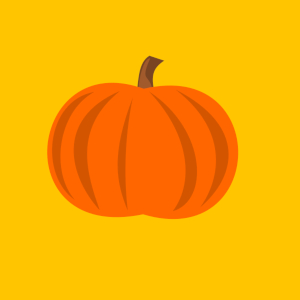


A pumpkin is a type of winter squash that is typically smooth, a shade or orange or yellow, and thick-skinned. Pumpkins are grown for numerous culinary uses, including in savory and sweet dishes, as well as to make pumpkin seen oil, and also for decoration, primarily during fall. Jack-o'-lantern carving is an especially popular activity in both the United States and Canada in which pumpkins are hollowed out and designs are made by cutting out pieces of the thick skin.
Besides both being large and round, pumpkins and watermelons don't seem to have too much in common. And with cucumbers even less so! Interestingly enough, however, pumpkins, melons, and cucumbers all belong to what's known as the gourd family, or the Cucurbitaceae.
In Greek, this word is pepon, which the French changed into pompon. The English adapted it further into pumpion, which in the 1600s eventually became the word we know and use today to describe our favorite orange fall squash.
While the exact time and place of the first domesticated pumpkin growing isn't known for certain, there is evidence that it may have occurred in the area that is now Mexico as far back as 7,500 BCE. Archaeological remains of pumpkin seeds have been found in Mexico, and it is believed that indigenous peoples in the region may have selectively bred wild pumpkins to create the larger, sweeter varieties that we know today.
Pumpkins and other types of squash have been also been grown for thousands of years by Native American tribes, who roasted or boiled them for food and used their shells as bowls or containers. The French explorer Jacques Cartier is believed to have been the first European to encounter pumpkins during his exploration of North America in the 16th century.
You might have had the opportunity to snack on some delicious roasted pumpkin seeds after carving your jack-o'-lantern, but we bet you didn't know you can also eat the skin, leaves, flowers, and even the stem.
Pumpkin leaves, or pumpkin greens, are a common ingredient in African cuisines. The leaves are used in stews and soups and are a good source of vitamins and minerals. In Italy and Mexico, pumpkin flowers are also often often stuffed with cheese or meat and fried. In some Asian cuisines, pumpkin skin is used to make pickles, and in Indian cuisines, pumpkin stem is used in curries.
Pumpkin pie is by far the most popular dessert for the US holiday of Thanksgiving. According to the survey website, YouGov.com, 35% of respondents voted pumpkin pie as their favorite, followed by a not-so-close 16% for pecan pie and 11% for apple pie. That's a whole lot of pumpkins!
While technically a different cultivar, or species, than the pumpkins that are typically eaten or used as jack-o'-lanterns, giant pumpkins, or Cucurbita maxima, lack the gene responsible for stopping fruit growth, resulting in completely uncontrolled growth of up to 23 kg a day! Giant pumpkins, which are 96% water, can grow so large, they commonly collapse under their own weight. The world record pumpkin was grown in 2021 in Italy and came in at an astonishing 1,226 kg.